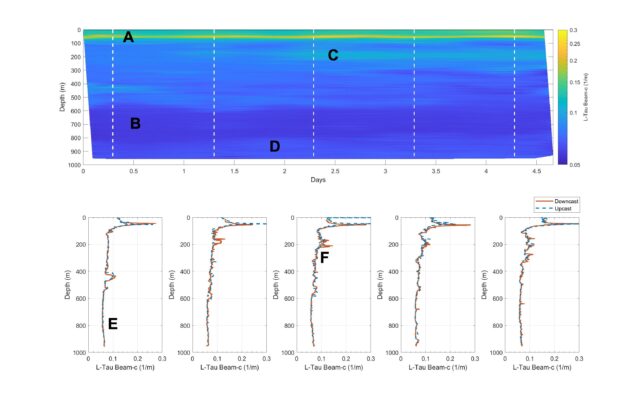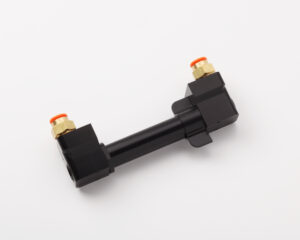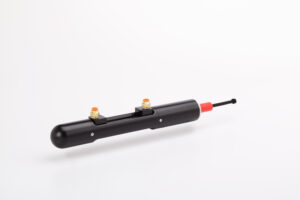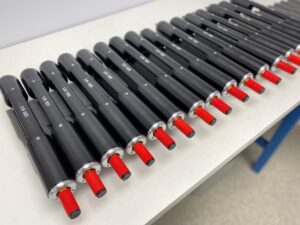In the underwater world, visibility is everything. Whether it’s a diver navigating murky waters, an autonomous vehicle scanning the seafloor, or a naval operation relying on optical sensors, understanding how light behaves underwater is critical. A simple and powerful measure for assessing underwater visibility is the beam attenuation coefficient (c)—a measure of how much light is lost due to absorption and scattering as it travels through water.
What Is Beam Attenuation?
Beam attenuation quantifies the reduction in light intensity as a collimated beam passes through water. It is influenced only by:
- Absorption by water molecules, dissolved substances (like colored dissolved organic matter, CDOM), and particles (e.g., pigments in plankton)
- Scattering by suspended particles such as sediment, plankton, or bubbles.
- Finally, note that beam attenuation can also be affected by beam steering due to density differences in the medium – see Sequoia’s article on this topic!
The higher the beam attenuation, the lower and more blurred the visibility. This makes it a direct and reliable metric for assessing underwater optical conditions. It is measured with a transmissometer such as, for example, Sequoia’s LISST-Tau or LISST-200X.
Why It Matters for Defense
In naval and defense contexts, beam attenuation plays a crucial role in:
- Underwater navigation and piloting: Autonomous underwater vehicles (AUVs) and remotely operated vehicles (ROVs) rely on optical and acoustic sensors. High attenuation can limit the range and effectiveness of these systems.
- Mine and object detection: Optical systems like laser line scanners and lidar are used to detect mines or submerged objects. Their performance is highly dependent on water clarity.
- Diver safety and mission planning: Real-time visibility data helps divers and mission planners assess risk and choose optimal deployment times and locations.
Applications in the Field
Modern defense operations use beam attenuation data in several ways:
- Real-time monitoring: Transmissometers mounted on buoys, ships, gliders or AUVs provide continuous updates on water clarity. For example this figure, showing a range of features elucidated with a LISST-Tau on a Teledyne Slocum Glider during a 4.5 day glider deployment:
- Environmental modeling: Beam attenuation is integrated into tactical decision aids (TDAs) to simulate visibility conditions and optimize sensor deployment.
- Sensor fusion: Combining beam attenuation with acoustic and thermal data enhances situational awareness in complex environments like harbors, estuaries, and littoral zones. For example this report: Use of underwater gliders on marine surveillance and observations.
Summary
Beam attenuation is more than just a measure of water clarity—it’s a strategic asset in underwater defense. Being able to quantify how light is lost in the water column enables safer navigation, more effective surveillance, and smarter decision-making in complex aquatic environments.
Get in touch to discuss how beam attenuation from Sequoia instruments can advance your research!
Download this article as a pdf.
- LISST-Tau
- LISST-Tau flow through chamber
- LISST-Tau with flow through chamber installed
- LISST-Tau units ready to ship
- LISST-Tau frame





